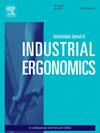2型糖尿病患者糖代谢模型的实时预测医疗服务
IF 3
2区 工程技术
Q2 ENGINEERING, INDUSTRIAL
International Journal of Industrial Ergonomics
Pub Date : 2025-09-01
DOI:10.1016/j.ergon.2025.103802
引用次数: 0
摘要
连续血糖监测(CGM)传感器和其他智能可穿戴设备为推进糖尿病疾病的自我管理提供了宝贵的机会。然而,在自然生活条件下,患者能否充分利用CGM数据,采取预防行为,达到更好的血糖自我管理效果,仍有待探讨。人类在葡萄糖自我管理情景下处理时间序列数据的能力有待评估。因此,本研究旨在(1)检验单独佩戴CGM传感器是否对血糖自我管理有效,并探索存在的关键障碍;(2)开发用于实时血糖预测的高性能预测模型,以促进自我管理。招募了30名2型糖尿病(T2D)患者,在现实环境中使用CGM传感器和智能手环收集13-14天的血糖、饮食、运动和药物数据,并辅以自我报告的记录。结果显示,患者的平均血糖水平没有明显改善。使用来自30名参与者中的20名的数据,开发并验证了注意力增强长短期记忆(ALSTM)葡萄糖预测模型,在30/60分钟的预测精度(误差<; 5%)内实现了较高的预测精度。当应用于其他10名参与者时,该模型结合深度迁移学习获得了很高的预测精度(误差分别为6.4%和4.7%),并且可以在数据有限的情况下对新患者进行早期预测。对60名研究生的进一步实验表明,人类的预测精度无法与模型竞争,也不足以进行自我管理。提出的方法为未来的预测性干预提供了希望,为T2D患者提供及时和个性化的血糖管理策略。本文章由计算机程序翻译,如有差异,请以英文原文为准。
Modelling type 2 diabetic patients’ glucose metabolism for real-time predictive healthcare service
Continuous glucose monitoring (CGM) sensors and other smart wearables offer valuable opportunities for advancing diabetes disease self-management. However, whether patients may take advantage of CGM data, take preventative behavior, and achieve improved glucose self-management result under natural living conditions still needs to be explored. Human’ s capacity of time series data processing in glucose self-management scenario needs to be evaluated. Accordingly, this study aims to (1) examine whether wearing a CGM sensor alone is effective for glucose self-management and explore key obstacles if any, and (2) develop a high-performance predictive model for real-time glucose forecasting to facilitate self-management. Thirty Type 2 Diabetes (T2D) patients were recruited to collect 13–14 days of glucose, dietary, exercise, and medication data in real-world settings using CGM sensors and smart bands, supplemented by self-reported loggings. The results show no significant improvement in patients' mean glucose levels. An attention-enhanced long short-term memory (ALSTM) glucose prediction model was developed and validated using data from 20 out of the 30 participants, achieving high predictive accuracy for 30/60-min prediction accuracy (errors <5 %). When applied to the other 10 participants, the model combined with deep transfer learning gained high prediction accuracy (errors <6.4 % and 4.7 %, respectively), and may enable early-stage predictions for new patients with limited data. Further experiment with 60 graduate students showed that human’ s predicting accuracy cannot compete with the model and is insufficient for self-management. The proposed approach holds promise for future predictive interventions, enabling timely and personalized glucose management strategies for T2D patients.
求助全文
通过发布文献求助,成功后即可免费获取论文全文。
去求助
来源期刊
CiteScore
6.40
自引率
12.90%
发文量
110
审稿时长
56 days
期刊介绍:
The journal publishes original contributions that add to our understanding of the role of humans in today systems and the interactions thereof with various system components. The journal typically covers the following areas: industrial and occupational ergonomics, design of systems, tools and equipment, human performance measurement and modeling, human productivity, humans in technologically complex systems, and safety. The focus of the articles includes basic theoretical advances, applications, case studies, new methodologies and procedures; and empirical studies.

 求助内容:
求助内容: 应助结果提醒方式:
应助结果提醒方式:


